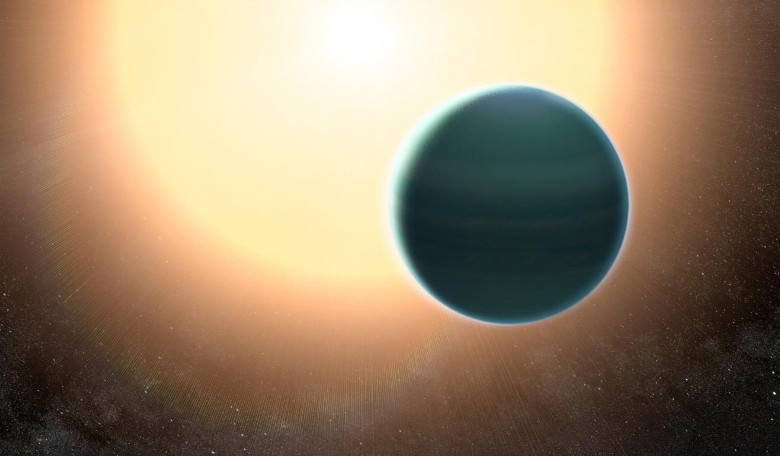Scientists carrying out one of the most detailed studies to date of a 'Warm Neptune' have revealed that an exoplanet located approximately 430 light years from Earth, has a primitive atmosphere that is composed almost entirely of hydrogen and helium with a relatively cloudless sky.
Warm Neptune’s are exoplanets that are similar in size to our own Neptune, but with orbits a lot closer to their host star. This particular planet is known as HAT-P-26b and insights into its atmosphere could provide scientists with a pivotal breakthrough as to how planets form and develop in far-flung galaxies.
"This 'Warm Neptune' is a much smaller planet than those we have been able to characterise in depth, so this new discovery about its atmosphere feels like a big breakthrough in our pursuit to learn more about how solar systems are formed, and how it compares to our own" said Professor Sing, from the University of Exeter and one of the researchers on the project.
Combining observations from NASA's Hubble and Spitzer space telescopes, the team used data from transits – occasions when the planet passed in front of its host star – to study the changes in starlight as it got filtered through the planet's atmosphere. By determining which wavelengths of light are absorbed and which aren’t, researchers can work backward to derive the chemical composition of the atmosphere.
The team were therefore able to conclude that HAT-P-26b's atmosphere has a strong water signature but little cloud cover, although the planet is not considered a water world. This analysis is the best measurement of water to date on an exoplanet of this size.
This primitive atmosphere also suggests that the planet most likely formed later in its solar system development, or closer to its host star, or perhaps both – a stark contrast compared to how scientists think Neptune and Uranus formed in our own Solar System.
"Astronomers have just begun to investigate the atmospheres of these distant Neptune-mass planets, and almost right away, we found an example that goes against the trend in our solar system,” said Hannah Wakeford, postdoctoral researcher at NASA's Goddard Space Flight Center and lead author of this study.
To have so much information about a warm Neptune is still rare but already the analysis of HAT-P-26b's atmosphere is showing surprising variety in an area of research that is just starting to get its feet off the ground.
"Not too long ago, it was exciting just to find an exoplanet," said Drake Deming, a professor of astronomy at UMD and a co-author of the study. "But now, as technology and methods become more refined, we are building a whole new understanding of the wide diversity of planetary systems beyond our own. It's a very exciting time to be in this field."











